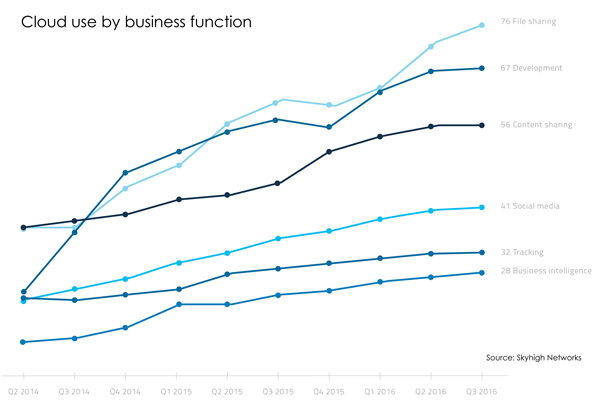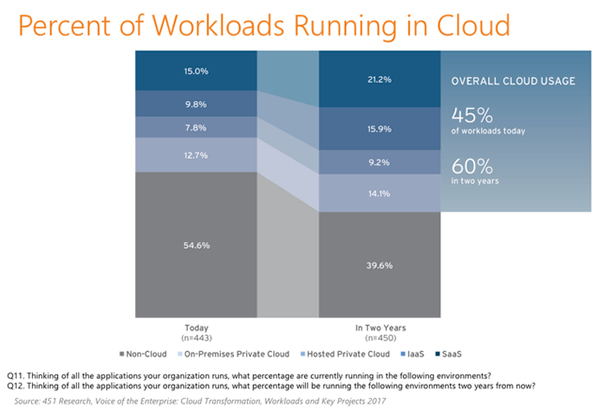
How many cloud services does your business use?

Chances are it’s more than you think.
Besides (significant) shadow IT, organizations typically deploy multiple cloud services and apps. Currently, 72% use two to five cloud providers; 14% use more than six . Such pervasiveness of cloud services has begun to transform how information technologies are delivered and used.
A world of application customization, regulation, and multi-cloud workloads
Among important developments:
- Organizations are ramping up spending on network security and wireless capabilities;
- Providers of Software-as-a-Service are broadening deployment options as demand for application customization accelerates;
- The EU’s General Data Protection Regulation (GDPR) requiring businesses to protect EU citizens’ personal data and privacy goes into effect this coming May, noncompliance penalties are steep, and GDPR may become a model for all future personal data protection.
- Now-dominant Kubernetes (the open-source system that automates deployment, scaling, and management of containerized applications) makes the ability to move apps between cloud environments much easier, thus facilitating multi-cloud deployments.
- By next year, 69% of enterprises will run multi-cloud workloads – even though the portability garnered from containerization won’t overcome the lock-in spawned by cloud-specific services.

In the year 2021…
Despite cloud-specific services’ power to lock in customers, competition among hyperscale public cloud vendors as well as the myriad ways private and hybrid cloud providers can respond to demands for customization can be expected to act as a counter-force.
By 2021, microservices and containers will rule as organizations shift apps to (often multiple) hyper-agile architectures. Some say 80% of application development on cloud platforms will use microservices and functions, and upwards of 95% of new microservices will be deployed in containers.
Also by 2021…
- Low-code/no-code application development tools will trigger dramatic growth in numbers of non-tech developers, who will build 20% of business apps and 30% new app features.
- Blockchain services will be real ; at least 25% of Global 2000 companies will use blockchain services as a foundation for digital trust at scale. Even sooner – by 2020 – 25% of top global transaction banks, nearly 30% of manufacturers and retailers, and 20% of healthcare organizations will use blockchain networks in production.
- Edge computing will claim 20% of diversifying cloud environments that are 15% specialized, 90% multi-cloud, and double the current size.
- AI will be used in 75% of commercial enterprise apps as well as more than 50% of new industrial robots, and 90% of customers will interact with support bots – all in a world with tens of billions of connected sensors and endpoints.
The new capabilities now buffeting cloud computing carry risk in addition to much opportunity – and staying competitive requires thinking ahead . In my next post, I’ll run through some key forward-looking cloud best practices.
